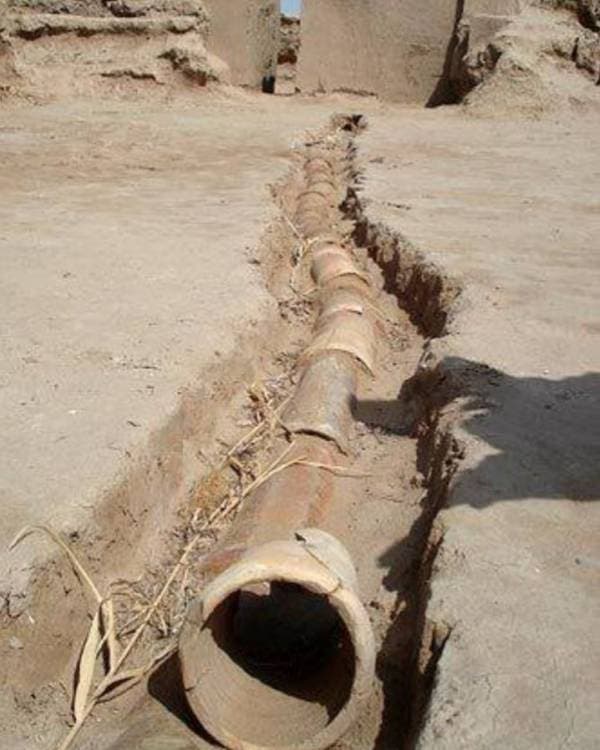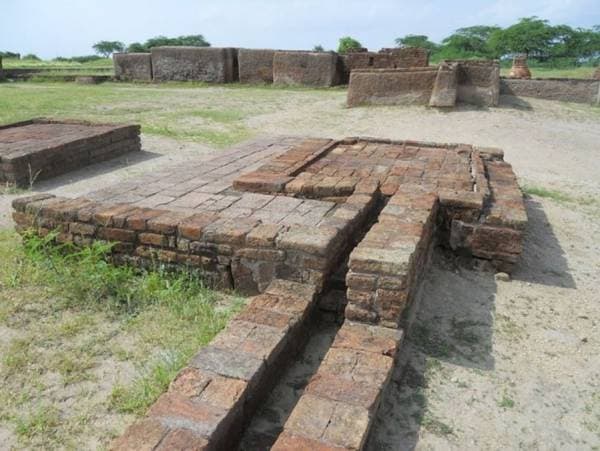Lothal Drainage

What do you see in this picture? A modern pipe? Looks like a part of a plumbing system? What if I told you this pipe dates back to ancient India of 2500 BC? Would you believe me? You need not believe me. This is what professional experts of Indus Valley Civilization and BMAC say.
This pipe belongs to an outpost of the Indus Valley (IVC) settlement in the BMAC complex. This was an outpost of traders from Lothal (in Today’s Gujarat). The Indus valley civilization (c.2500 BC) had a complex drainage system connecting every private house of the city. So did the BMAC complex in the third millennium BC (Bactria-Margiana Archaeological Complex or the Greater Bactria region in the Northwest of ancient Indian subcontinent known in Sanskrit literature as Bāhlika. According to the ancient Indian epic Mahābhārata the king of Bāhlika was a brother of Kuru King Shantanu of Bharata dynasty who was the great grandfather of Pandavas and Kauravas)
The city of Lothal had a very complex drainage system that collected waste from every private house of the city to dump it into a central sump outside of the city. Gonur in the northwest had these pipes for supplying water.

5000-year-old private bathroom and a concealed drainage system.
“The most unique aspect of planning during the Indus Valley civilization was the system of underground drainage. The main sewer, 1.5 meters deep and 91 cm across, connected to many north-south and east-west sewers. It was made from bricks smoothened and joined together seamlessly. The expert masonry kept the sewer watertight. Drops at regular intervals acted like an automatic cleaning device. “A wooden screen at the end of the drains held back solid wastes. Liquids entered a cess poll made of radial bricks. Tunnels carried the waste liquids to the main channel connecting the dockyard with the river estuary. Commoner houses had baths and drain that emptied into underground soakage jars.”
Source:
- https://trueindologytwitter.wordpress.com/2020/03/26/drainage-systems-of-the-indus-valley-civilization/
- https://trueindologytwitter.wordpress.com/2020/03/26/drainage-systems-of-the-indus-valley-civilization/
- Mark Kenoyer, Ancient Cities of the Indus Valley Civilization (Oxford University Press, 1998)